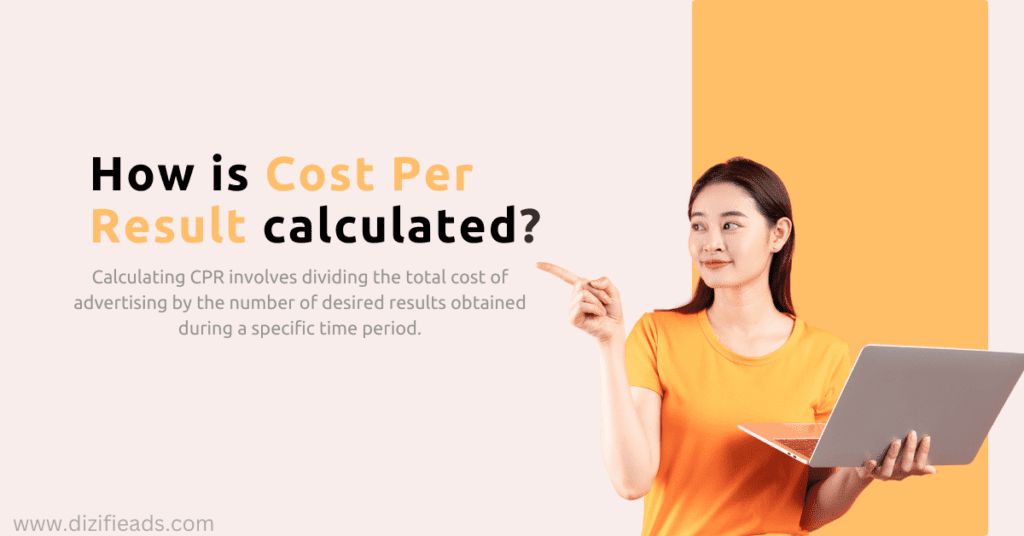CPR (Cost Per Result): A Comprehensive Overview
In today’s marketing scene, metrics matter for success. The main metric to focus on is Cost Per Result (CPR). CPR stands out from traditional metrics. It shows how effectively you use your marketing budget. It figures out the cost to reach goals, like a sale, a lead, or an app download. An e-commerce brand, for example, uses CPR to track its sales growth. This lets them see the cost per conversion. It helps optimize budgets and increases ROI. This guide explores CPR—what it is, how to calculate it, and why it matters for today’s marketers. We’ll look at ways to reduce CPR, target better, and improve campaign results. This will help businesses make smarter, outcome-driven decisions.
What is CPR?
CPR, or cost per result, is an important metric in digital advertising. It shows how much you spend for certain campaign results. CPR is not the same as metrics like impressions or reach. It focuses on real actions. This gives advertisers a clear view of how well they’re spending their money. Results can change a lot. They include easy tasks like ad clicks and form submissions. They can lead to key results, such as sales, app installs, or new leads. Advertisers can use CPR to track their campaign success. It tells them how much they pay for each action they want. This metric is useful for managing budgets. It shows which strategies offer the best return on investment (ROI). For example, a campaign with a lower CPR for conversions shows it’s more cost-efficient. This helps advertisers use their resources wisely.
- The cost includes spending on ad campaigns. It covers ad spend, agency fees, and other incurred costs.
- Advertisers aim to achieve a desired action or outcome. This could be a click on an ad, form submission, buy, or lead.
How is CPR Calculated?

To calculate CPR, divide the ad cost by the results. Calculate for a specific period. The formula for CPR is:
[{CPR} = {Total Cost}}/{Number of Results}}]
For example, if an advertiser spends $500 on a campaign and gets 100 conversions. The CPR would be $5 per result.
Significance of CPR:
Understanding CPR is crucial for several reasons:
- Budget Optimization: It helps advertisers divide their budgets. They do this by finding which campaigns or channels deliver the best results. They must do so at the lowest cost.
- Performance Evaluation: CPR allows advertisers to see how well their ads did. It lets them use data to make better choices in the future.
- ROI Measurement:
- Advertisers can compare CPR with the revenue from the desired outcomes. This lets them measure the return on investment (ROI) of their marketing.
Strategies to Improve CPR:

To lower our CPR (Cost Per Result), we need smarter and data-driven campaigns. Marketers should kick off with solid audience research. They can plan how to better target their audience. They can engage more people and save money by improving their messages and trying new ad formats. Keeping an eye on key metrics and using data for changes can improve results. This tactic leads to better marketing spending and helps us meet our goals.
1. Targeted Audience Segmentation:
Advertisers can target people by their age, gender, and location. They also look at interests, like hobbies and preferences. They consider behaviors too, such as how people shop online. This data helps them craft messages just for certain groups. This way, they boost engagement and conversion rates. Advertisers craft content aimed at their audience. This motivates them to buy products, sign up for services, or take action.
2. Ad Creative Optimization:
Mixing up your ads shows what your audience likes. This can increase engagement, improve results, and lower your costs. Test out various images, messaging styles, and color schemes. This reveals what draws in your audience and motivates them to act. Use these insights to tweak your ads, making them more effective and budget-friendly.
3. Bid Management:
You can optimize bidding strategies. This includes manual bidding or automated bidding algorithms. They help control costs and maximize ad spend efficiency.
4. Ad Placement Optimization:
Choosing the right placements and channels for advertising can enhance CPR. Avoiding poor ones can too. This happens when companies focus their resources on the best ads. This ensures their message reaches the right audience at the right time.
5. Landing Page Optimization:

Optimizing landing pages for conversion rate optimization (CRO) can enhance the user experience. It also raises the chance of visitors completing the desired action. This lowers the cost per acquisition (CPR).
FAQs about CPR:
1. What is the importance of CPR in digital advertising?
CPR, or cost per result, is a key metric. It shows how efficient ad campaigns are. By calculating CPR, advertisers can see how effective their ads are. They can compare this to the cost. This metric helps advertisers make informed decisions. They use it to divide their resources for the most impact and return on investment (ROI). By studying CPR, advertisers can find which strategies work best. They can then adjust their campaigns to meet their goals.
2. How does CPR differ from other advertising metrics like CPC and CPM?
CPC (Cost Per Click) and CPM (Cost Per Mille) focus on clicks and impressions. CPR measures the cost per specific result, like conversions or sales.
3. What factors influence CPR?
Many factors can affect CPR. These include target audience, ad creativity, bidding, and landing page quality.
4. Why is it essential to track CPR?
Regular tracking of CPR allows advertisers to check campaign performance. They can identify trends and make timely changes to improve results.
5. How can advertisers reduce CPR without compromising results?
Advertisers can reduce CPR. They can do this by using strategies. These include audience segmentation, ad creative tweaks, and bid management. These strategies improve campaign efficiency. Is CPR useful for all ad campaigns? Yes, you can apply CPR to many advertising goals. These include lead generation, sales, app installs, and website traffic.
6. What role does targeting play in CPR optimization?
Segmenting the audience helps advertisers reach the right people. This boosts the chance of desired actions and lowers CPR.
7. How can advertisers measure the success of CPR optimization efforts?
Advertisers can measure CPR optimization’s success. They do this by tracking changes in campaign metrics. These include conversion rates, cost per acquisition, and ROI.
8. Can CPR vary across different advertising platforms?
Yes, CPR can vary by platform and audience. It depends on demographics, industry, and objectives.
9. What are some common mistakes to avoid when optimizing CPR?
People often make three common mistakes. They forget to segment their audience and to test ad creativity. They also fail to check campaign performance.
10. Is there a benchmark for CPR that advertisers should aim for?
CPR varies by industry, goals, and ad platforms. So, advertisers should focus on improvement, not fixed benchmarks.
11. How can small businesses with limited budgets leverage CPR?
Small businesses can use CPR. They do it by focusing on targeted campaigns. They check performance and divide budgets to the best channels.
12. Does CPR consider the quality of leads or conversions generated?
While CPR measures the cost per result, it may not account for the quality of leads or conversions. But advertisers can analyze more metrics. They can look at conversion rate and customer lifetime value to assess lead quality.
13. What role does ad relevance play in CPR optimization?
Ad relevance is crucial for CPR optimization. Relevant ads are more likely to resonate with the target audience. This leads to higher engagement and lower CPR.
14. How can advertisers change their CPR strategy? They need to do so to adapt to shifts in consumer behavior or market trends.
Advertisers can change their CPR strategy. They can do this by staying informed about consumer behavior and market trends. They can also test new approaches and be agile in adjusting campaign tactics.
Conclusion:
CPR (Cost Per Result) is vital in digital marketing. It measures the cost of achieving goals. This metric helps advertisers gauge their campaigns. It lets them improve them. By studying CPR, advertisers can improve their campaigns. This, in turn, boosts ROI and helps meet goals. To succeed in the fast-paced digital world, you must use data to guide your decisions. You must also adapt to outpace the competition.


Pingback: CPS (Cost Per Sale): The Future of Performance Marketing -